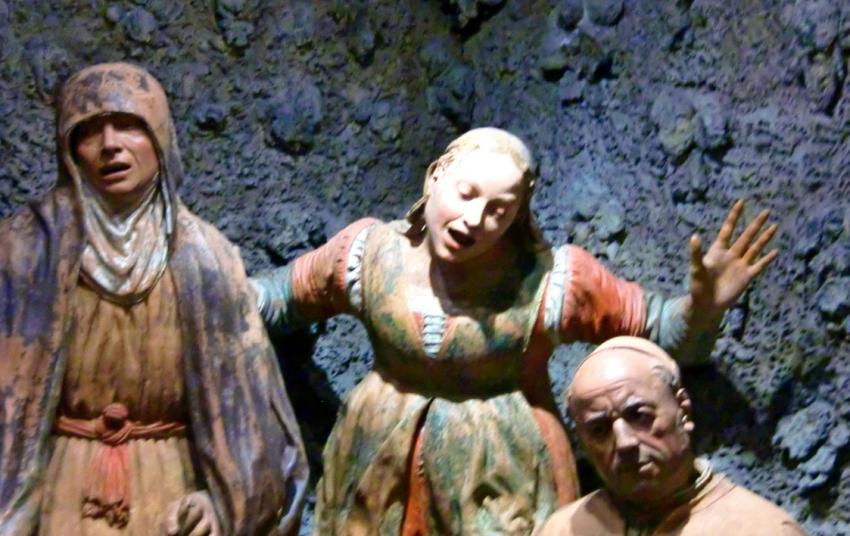- Read offline
- Access all content
- Use the in-app Map to find sites, and add custom locations (your hotel...)
- Build a list of your own favourites
- Search the contents with full-text search functionality
- ... and more!
Terracotta Art
Dreaming in Clay

There is very little stone, much less marble, to be had on the Po plain, but no end of quality clay. The Etruscans were the first ones here to sculpt and bake clay figures, for their temple decoration and for funeral sculpture—banqueting couples lounging nonchalantly on their own urns.
The 16th-century was the great age of life sized terracotta statues and altarpieces, and Bologna and Modena produced masters of the art who were admired by Michelangelo, even if most art historians since have tended to ignore them as being less 'noble' than marble. The best of them were Guido Mazzoni, Antonio Begarelli, Niccolò dell'Arca, and Vincenzo Onofri.
Their life-sized terracotta groups, which still adorn dozens of churches in the region, were incredibly tricky to make. Various kinds of clay are excavated, dried, cleaned of impurities, combined and kneaded together and then reconstituted. An internal armature has to be made to support the weight of the heavy wet clay during the modelling. Here the work was distinctly easier than stone; instead of a chisel, fingers were the main tool.
Once modelled, the sculpture is left to completely dry, before being cut into sections to remove the armature. Each piece is then hollowed out for even baking in the open flame kiln for up to 24 hours cooked until stone hard. Then the statues would be reassembled, using stucco for the glue, then finished. At any point along the way something could go horribly wrong, and there would be nothing to do but start over.
Image by Laurom, Creative Commons License

